Mothers Day: 120 Years Ago -- Maternal and Baby Health Kits
With Mother’s Day coming up in the U.S. on May 9th, Kilmer House would like to salute all of the Moms throughout our history and in our present. This is the first in a series of three Mother’s Day posts that talk about some of our history that is connected to mothers. One of the ways Johnson & Johnson supported mothers starting in the 1890s was through the manufacture of maternity kits, designed to insure safe childbirth for the mother and baby.
Today, there are countless books, websites, online communities and classes for expectant parents to prepare them for the birth of a child. And in most areas of the world, childbirth occurs in a hospital with teams of trained medical professionals to ensure that the experience is routine and successful for the mother and the baby. A hundred and twenty years ago, the experience of childbirth was very different.
In those days, most babies were born at home. In the year 1900, only five percent of women gave birth in hospitals. The doctor or midwife -- but more usually the expectant mother and the family – were expected to gather and provide any supplies that were needed for the event. This was a practice that Johnson & Johnson was determined to change because, as our First Aid Manual stated, “The patient does not always know what is required for the maintenance of surgical cleanliness, and this is particularly true of young women, pregnant for the first time…” [A Handbook of First Aid, Johnson & Johnson, New Brunswick, N.J., U.S.A., 1903, p. 29]
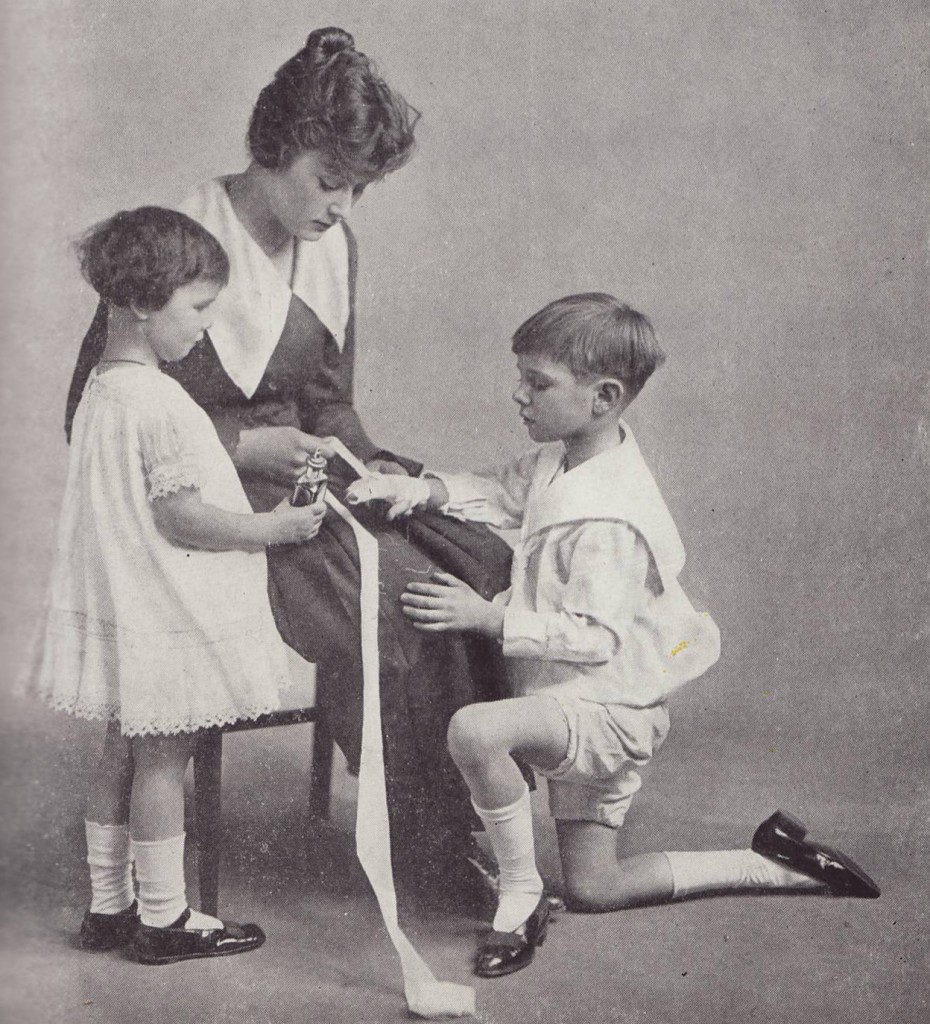
Mother and children, 1917, from our archives
There was very little information for expectant parents, and they usually got it from family members of members of the community. Needless to say, much of that information was unscientific and inexact. Even more worrisome was the high incidence of what used to be called “childbed fever”-- infection caused by the same germs that caused surgical infections.
So how does that tie in with Johnson & Johnson? The founders of Johnson & Johnson (although they were fathers, not mothers) had families, and the Company had many women employees, so they were all very aware of the need for products that specifically addressed improving the health of new mothers. So in the 1890s, working with prominent obstetricians, Johnson & Johnson came out with maternity kits. These were large kits containing professional sterile medical supplies and antiseptic soaps -- everything a doctor would need to ensure a safe and healthy birth for a mother and child. The kits – Dr. Simpson’s Maternity Packet and, later, Dr. Cooke’s Maternity Outfit, were named after the doctors who worked with Johnson & Johnson on the kits. Dr. Cooke was especially well-respected: he was a professor of obstetrics and an obstetric surgeon in New York, and the author of many articles and books in his field. The Johnson & Johnson maternity kits could be purchased either through retail drug stores or surgical supply dealers.
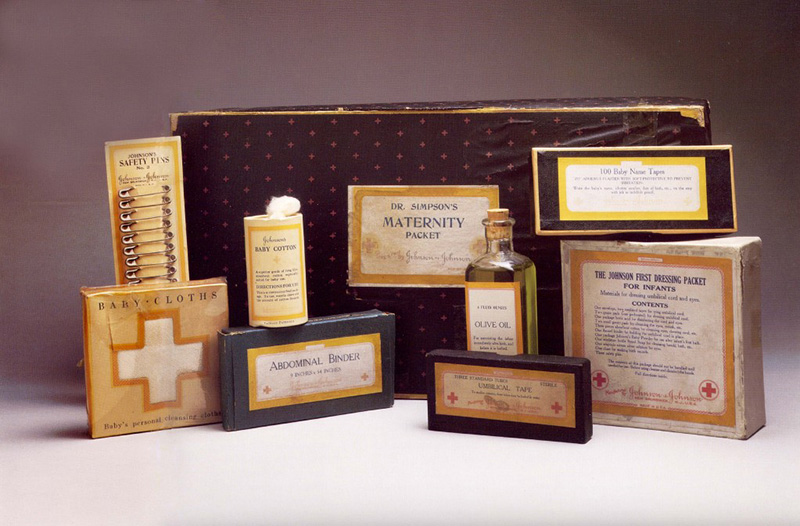
Dr. Simpson's Maternity Packet
Dr. Simpson’s Maternity Packet contained a disposable obstetric sheet, sterile cotton sheeting, sealed aseptic gauze, sterile ligatures, and sponges, a small package of antiseptic JOHNSON’S® Baby Powder, petroleum jelly, antiseptic surgeon’s soap for sterilizing the doctor’s hands, instruments and anything else that needed to be germ free, a washcloth, materials for washing the infant’s eyes, a package of safety pins and a chart for use in keeping birth records.
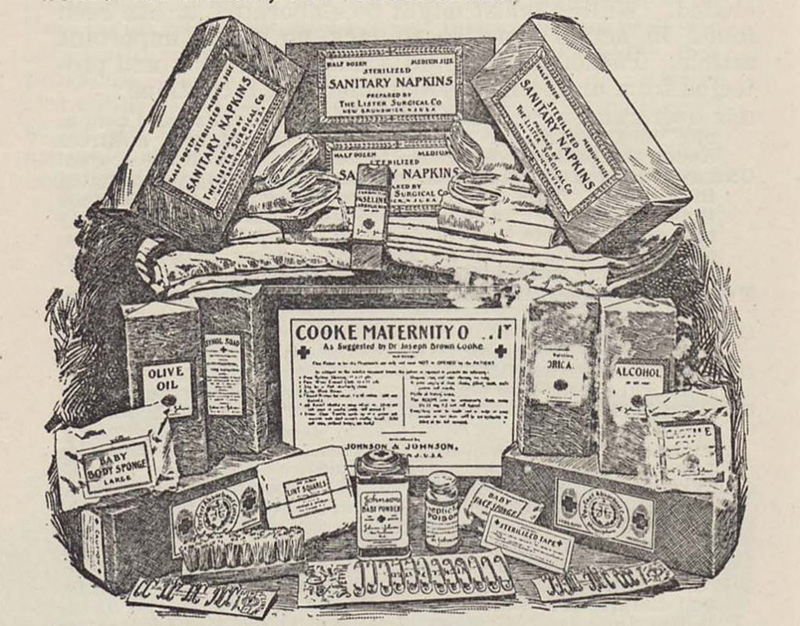
Illustration of Dr. Cooke's Maternity Packet
Dr. Cooke’s packet was even larger. In addition to greater quantities of the antiseptic supplies in Dr. Simpson’s kit, Dr. Cooke’s kit also contained 24 sanitary pads (women soon began writing to Johnson & Johnson asking for them as a separate product, giving us one of our oldest consumer businesses), a nail brush (for the doctor to use in scrubbing his hands), alcohol, Synol Soap (a disinfectant soap), olive oil, boric acid solution for cleaning the infant’s eyes, sterile surgical tape, and antiseptic tablets used to make solutions to sterilize instruments. These kits were welcomed by obstetricians, druggists and parents, to the extent that druggists advertised that they carried them to get traffic into their pharmacies.
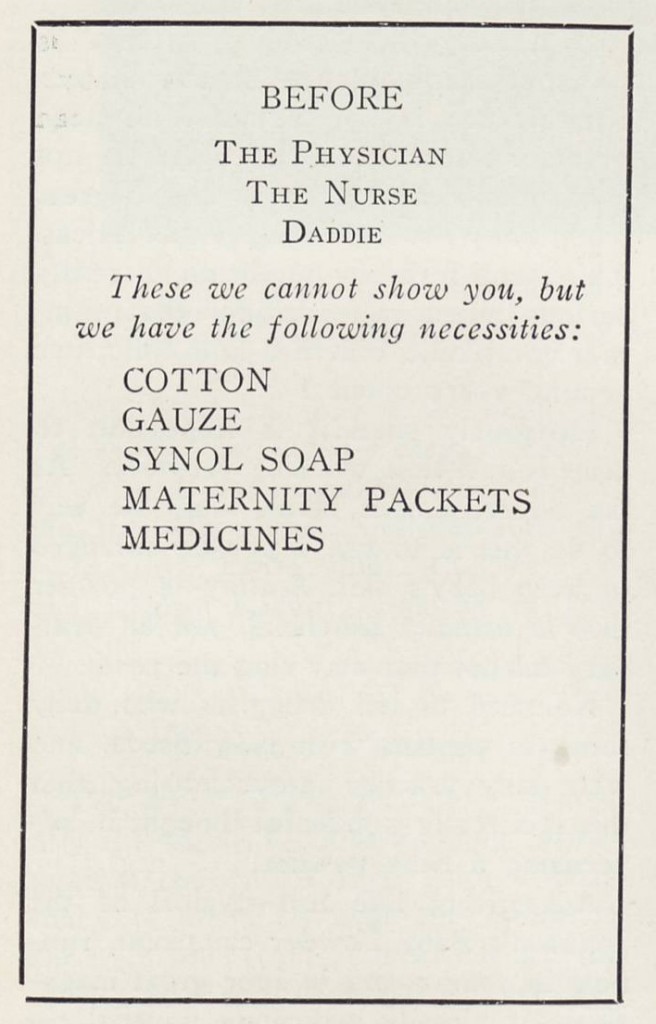
An idea for a drugstore window sign by a retail druggist in Madison Wisconsin, submitted to THE RED CROSS MESSENGER in 1920. Note that fathers-to-be were listed as having responsibility for gathering supplies for childbirth.
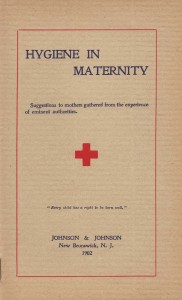
In 1902, Johnson & Johnson also published “Hygiene in Maternity,” a booklet for expectant mothers covering all aspects of pregnancy, diet, delivery and how to care for a newborn baby. The booklets were small in size so that women could carry them in a pocket or purse, and they provided real health information to expectant mothers, instead of the traditional combination of urban legends, folk remedies and proverbs that expectant and new mothers had to navigate 100 years ago.
Today, we talk about putting science in the service of the people who use our many products. These maternity kits and the information booklets did exactly that over 100 years ago, and greatly helped women who were becoming mothers.
